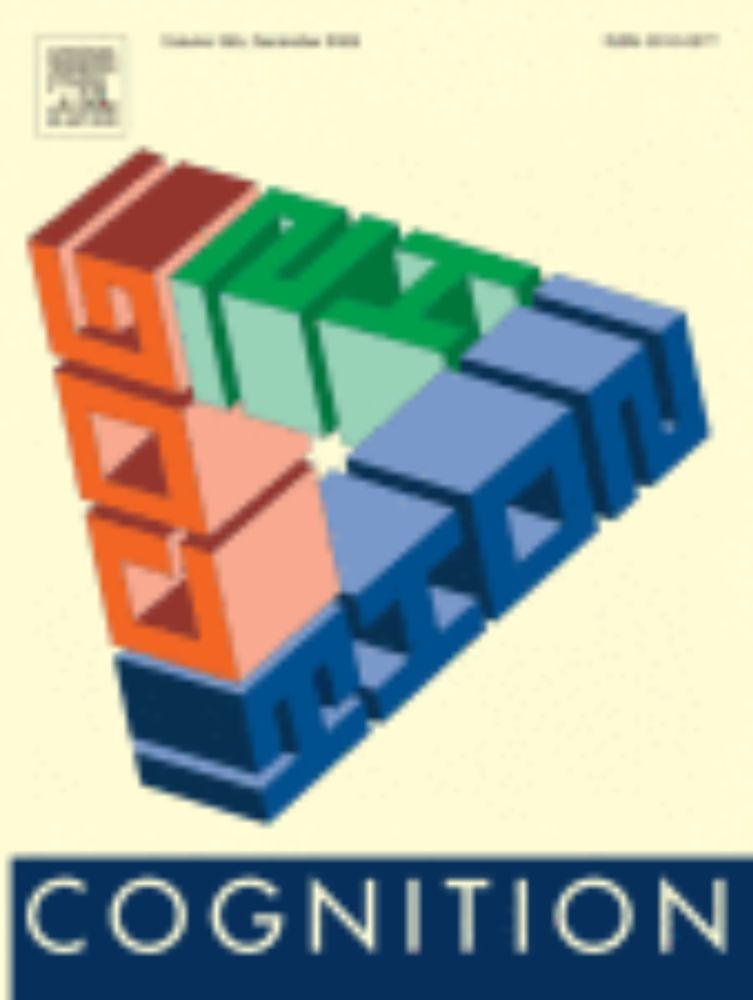David Rose (davdrose.github.io) led this project on how children's understanding of causal language develops.
📃 (preprint): osf.io/preprints/ps...
📎: github.com/davdrose/cau...
David Rose (davdrose.github.io) led this project on how children's understanding of causal language develops.
📃 (preprint): osf.io/preprints/ps...
📎: github.com/davdrose/cau...

"Models casting egalitarian societies as crucibles of equality perpetuate the factually uninformed notion that foragers are somehow more noble. Critiques portray egalitarianism as romantic fantasy. Neither characterization is wholly justified."
doi.org/10.1017/S014...
"Models casting egalitarian societies as crucibles of equality perpetuate the factually uninformed notion that foragers are somehow more noble. Critiques portray egalitarianism as romantic fantasy. Neither characterization is wholly justified."
doi.org/10.1017/S014...
We aimed to cover all the foundations of the topic in an accessible manner for a large audience.
It could help set up a bachelor-level curriculum on the topic.
Pre-orders are very key for the fate of books: shorturl.at/Dxbif


We aimed to cover all the foundations of the topic in an accessible manner for a large audience.
It could help set up a bachelor-level curriculum on the topic.
Pre-orders are very key for the fate of books: shorturl.at/Dxbif
cognitivescience.ceu.edu/admission
Deadline February 4, 2026. Please share with any interested students!
#PsychSciSky #DevPsych #CogPsych
cognitivescience.ceu.edu/admission
Deadline February 4, 2026. Please share with any interested students!
#PsychSciSky #DevPsych #CogPsych
Designed for Psychology & Cognitive Neuroscience Master's students starting their programming journey at @vuamsterdam.bsky.social.
Feel free to share! Feedback welcome!



Designed for Psychology & Cognitive Neuroscience Master's students starting their programming journey at @vuamsterdam.bsky.social.
Feel free to share! Feedback welcome!
"Physics versus graphics as an organizing dichotomy in cognition"
www.cell.com/trends/cogni...



"Physics versus graphics as an organizing dichotomy in cognition"
www.cell.com/trends/cogni...
genzplyr is dplyr, but bussin fr fr no cap.

genzplyr is dplyr, but bussin fr fr no cap.
Caveats:
-*-*-*-*
> These are my opinions, based on my experiences, they are not secret tricks or guarantees
> They are general guidelines, not meant to cover a host of idiosyncrasies and special cases
Caveats:
-*-*-*-*
> These are my opinions, based on my experiences, they are not secret tricks or guarantees
> They are general guidelines, not meant to cover a host of idiosyncrasies and special cases
doi.org/10.1016/j.cognition.2025.106238
👇
doi.org/10.1016/j.cognition.2025.106238
👇
In this new paper from the lab, Lorenzo Ciccione, Marie Lubineau, Theo Morfoisse and I show that 5 and 6 year olds already possess intuitions of linearity, curvature, period and compositionality.
www.sciencedirect.com/science/arti...

In this new paper from the lab, Lorenzo Ciccione, Marie Lubineau, Theo Morfoisse and I show that 5 and 6 year olds already possess intuitions of linearity, curvature, period and compositionality.
www.sciencedirect.com/science/arti...



direct.mit.edu/opmi/article...

direct.mit.edu/opmi/article...
With Alon Hafri, @veroniqueizard.bsky.social, @chazfirestone.bsky.social & Brent Strickland
Read it here: doi.org/10.1017/S014...
A short thread [1/5]👇

With Alon Hafri, @veroniqueizard.bsky.social, @chazfirestone.bsky.social & Brent Strickland
Read it here: doi.org/10.1017/S014...
A short thread [1/5]👇
A stimulus-computable rational model of visual habituation in infants and adults doi.org/10.7554/eLif...
This is the thesis of two wonderful students: @anjiecao.bsky.social @galraz.bsky.social, w/ @rebeccasaxe.bsky.social




A stimulus-computable rational model of visual habituation in infants and adults doi.org/10.7554/eLif...
This is the thesis of two wonderful students: @anjiecao.bsky.social @galraz.bsky.social, w/ @rebeccasaxe.bsky.social


Humans are capable of sophisticated theory of mind, but when do we use it?
We formalize & document a new cognitive shortcut: belief neglect — inferring others' preferences, as if their beliefs are correct🧵

Humans are capable of sophisticated theory of mind, but when do we use it?
We formalize & document a new cognitive shortcut: belief neglect — inferring others' preferences, as if their beliefs are correct🧵
📃 authors.elsevier.com/a/1lo8f2Hx2-...
📃 authors.elsevier.com/a/1lo8f2Hx2-...
We examine how people figure out what happened by combining visual and auditory evidence through mental simulation.
Paper: osf.io/preprints/ps...
Code: github.com/cicl-stanfor...

We examine how people figure out what happened by combining visual and auditory evidence through mental simulation.
Paper: osf.io/preprints/ps...
Code: github.com/cicl-stanfor...
Out now open access: www.sciencedirect.com/science/arti...
Andreas isn't on bsky, but he very kindly wrote a summary thread for me to share.
🧵 (1/24)

Out now open access: www.sciencedirect.com/science/arti...
Andreas isn't on bsky, but he very kindly wrote a summary thread for me to share.
🧵 (1/24)

